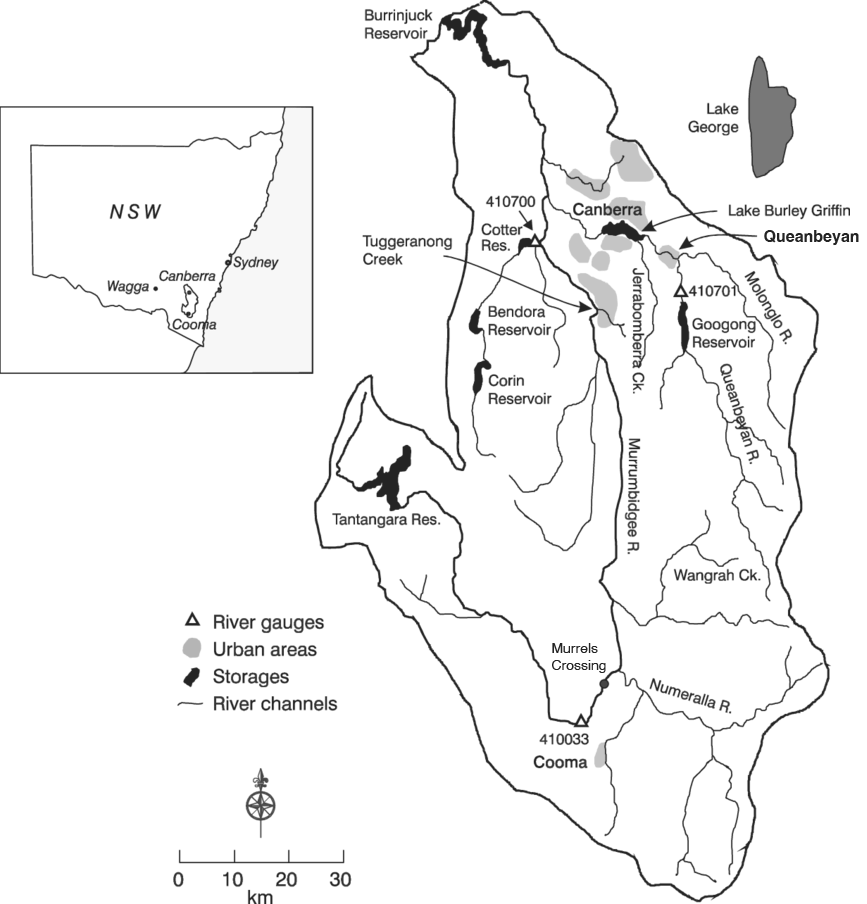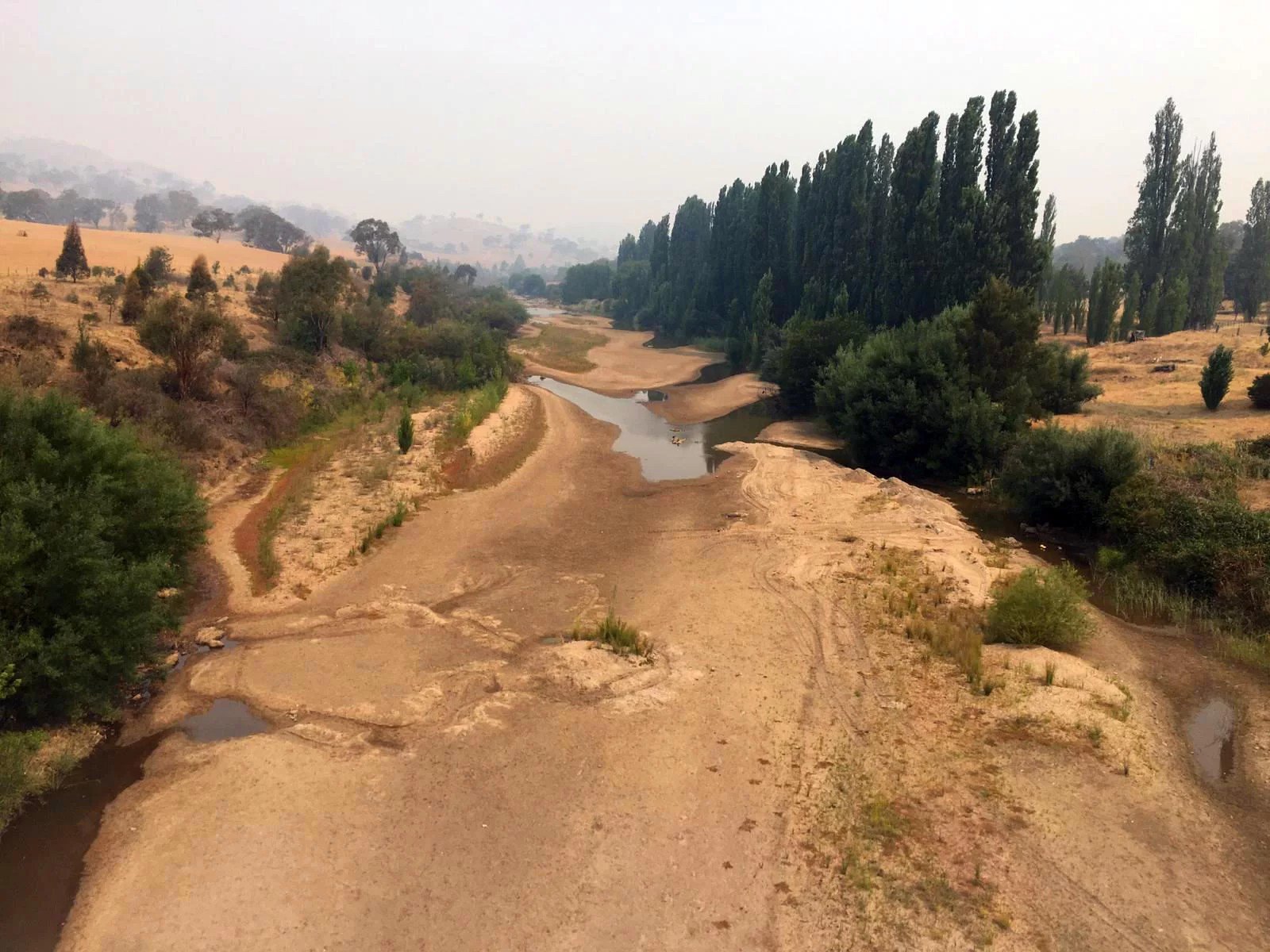The Upper Murrumbidgee River is in trouble
and needs our help.
We acknowledge Aboriginal and Torres Strait Islander people and recognise their continuing connection with, and knowledge about, land, waters and community. We pay our respects to them and their cultures; and to Elders past, present and emerging.
Left to right: Richie Allan, Bradley Bell, Dr. Siwan Lovett, Sen. David Pocock, Andy Lowes.
New hope for the future of the Forgotten River
Our ‘Bidgee is starting to be remembered! The Forgotten River campaign has catalysed substantial and meaningful change in securing a much-needed ~$50 million support package for the Upper Murrumbidgee, including $20m for catchment health initiatives, $30m to purchase water in times of drought and $500,000 for First Nations to genuinely have their say in the ongoing management of the river. The Upper Murrumbidgee still needs more water, but we are hopeful that this agreement sets in motion the ability for these flows to be provided in future years.
November 2023
Discover what our community survey revealed.
In November through December 2023, we conducted a wide-ranging community survey to measure the awareness, opinions, desires and values of people across Australia who care about the Upper Murrumbidgee River. The response was overwhelming — people care deeply about the fate of the Upper Murrumbidgee.
Why ‘The Forgotten River’?
The Upper Murrumbidgee River has been left behind by Federal and NSW water management reforms that are designed to improve the health of our waterways.
The legislative framework for ensuring that the Murray-Darling Basin (Australia’s largest water resource) is managed in the national interest explicitly excludes structures operated by the Snowy Hydro scheme, which means that Tantangara Dam can capture more than 90% of the water at the headwaters of the Murrumbidgee River each year, and as much as 99% in dry years.
Further, the current rules in place for this part of the river mean that when Snowy Hydro does release water for the environment, these flows are not protected from extraction.
The map shows the Upper Murrumbidgee River which starts above Tantangara Dam and runs through NSW and the ACT to Burrinjuck Reservoir.
The Murrumbidgee River dried to pools in December 2019 - upstream of Tharwa Bridge. Photo credit: Simon Lowes.
This leads to crises like this one. In 2019, the Upper Murrumbidgee River at Tharwa ran dry.
While it may seem a long way off at the moment, it’s only a matter of time until this happens again…

“The plight of the Bidgee hit home for me when it stopped flowing in 2019 – after a lifetime of living near and playing in the river, I had grave concerns for the environment and the security of our drinking water.”
Andy Lowes
Program Manager, Australian River Restoration Centre
…leading to negative consequences for:
-
Fish communities in the upper Murrumbidgee River are in very poor condition, this has been documented since 2008 (Murray-Darling Basin Sustainable River Audit Reports).
Silver perch are now considered extinct in the Murrumbidgee River between Tantangara Dam and the ACT. Other native species at risk include the Macquarie perch, Trout cod, Murray cod, Two-spined blackfish, Golden perch, Mountain galaxias, Australian smelt, Murray crayfish, Platypus, Rakali (water rat) and Eastern long-neck turtles. The upper Murrumbidgee contains the best population of the endangered Macquarie perch in Australia.
Instream and riverbank vegetation, bird communities and wildlife are all impacted by the lack of flows with the habitat they rely upon shrinking and unreliable.
-
The river is increasingly becoming of such poor-quality water that it is hazardous to human health and unreliable as a source of drinking water. During the drought in 2019, the river ceased to flow, reducing the Murrumbidgee to stagnant, algae-choked pools. Drinking water was trucked into the Township of Tharwa, a sign that current arrangements are not supporting critical human water needs.
The nutrient, sediment and bacteria in the water coming down the river are of concern, and in regards to nutrients, are failing the Australian New Zealand Environment and Conservation drinking water guidelines – a major cause for concern for our water security in a drying climate.
As a source of consumptive water for the region – including as Canberra’s third supply of drinking water – we are dependent on a healthy river with good water quality to supplement our drinking water during dry times. Poor water quality and availability on the back-end of the drought in 2017-19 has raised concerns about the reliability of access to critical drinking water in future dry years.
The current quality and quantity of the water in the river is failing our First Nations by breaking songlines, impacting Cultural practice, ceremony, health and wellbeing.
In recent years, the river has been closed for recreational use over summer due to elevated levels of enterococci bacteria in the water.
-
Our Murabidji River is dying.
Waterways are our pathways into the mountains and follow songlines which are tens of thousands of years old. Our rivers enable us to engage in our cultural ceremonies, trade, initiation, marriage and cultural responsibilities.
Ngunnawal people see our waterways and Country dying as a result of the current upstream water management in the Upper Murrumbidgee valley. Upstream water management is compromising both the ecological and cultural values and impacting our people’s health and well-being. Without doubt, our observations are supported by Western science.
Our Ngunnawal Country needs a sustainable water flow in the Murrumbidgee River or it will die along with the river. We need a plan that returns more water back to the river and protects it from extraction. Such a plan needs to support and protect our cultural values, cultural practices and cultural uses.
To save our river and Country, we ask for governments to turn their attention to the plight of the Upper Murrumbidgee River and the Ngunnawal Traditional Custodians, and accept that it is a shared responsibility between governments to protect and maintain our waterways for ALL people. We are ready to talk when you are.
-
We are seeing the river increasingly closed for recreational use because of elevated bacterial levels that make it unsafe to swim and enjoy.
High levels of sediment and organic material are continually being washed into the river, and this can cause major bacterial activity to occur.
Periods of elevated bacterial levels are not limited to being associated with storm events. There is emerging evidence indicating a relationship also exists between low flows and high enterococci levels. However, further research is needed to understand the mechanism for this process.
These issues were raised by the ACT Government as part of routine reporting under the Murray Darling Basin Plan, and will continue to occur if we don’t take action now.
-
In the upper Murrumbidgee, environmental water arrangements set and governed by the Snowy Water Inquiry Outcomes Implementation Deed (SWIOID) and Licence are insufficient, outdated, ineffective and inconsistent with the reforms intended under the Murray Darling Basin Plan.
Under the current arrangements set out in the Water Sharing Plan for the Murrumbidgee Unregulated River, water that is earmarked for the environment can be extracted from the river for consumption and agriculture, as soon as it reaches the first pumps.
The Murrumbidgee Unregulated Water Sharing Plan, the Murrumbidgee River Water Resource Plan and the SWIOID aim to maintain the status quo for the Upper Murrumbidgee, ensuring its managed demise.
The Murrumbidgee Unregulated Water Sharing Plan is currently being reviewed by the NSW Water Resource Commission and we are hopeful that this process will seek to protect the small amount of water for the environment in the Upper Murrumbidgee. This highlights the importance of The Forgotten River campaign to help our community understand these issues and possible solutions.
How can we change this?
For us to change the future of the Upper Murrumbidgee, it’s critical that we bring the management of the headwaters of one of our largest and most significant rivers into line with contemporary best practice management and governance.
Only then can we ensure the key organisation responsible for the operation of Tantangara Dam, Snowy Hydro, will have legal obligations to care for the people, communities and ecosystems downstream of its operations that depend on a healthy and flowing river. NSW water management instruments need to enable this.

“Healthy rivers are fundamental to the health of communities in our region. By all working together we can safegaurd the health of the Upper Murrumbidgee River for the benefit of our fish, platypus, Rakali, turtles, Murray crays and the well-being of our communities.”
Antia Brademann
Upper Murrumbidgee Demonstration Reach Facilitator









